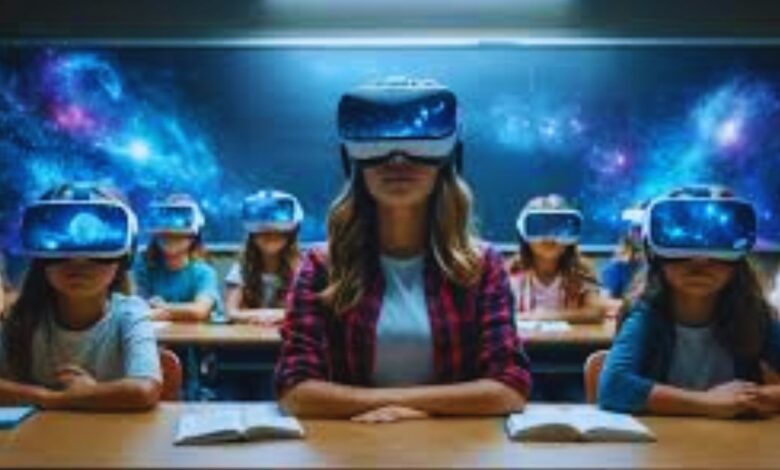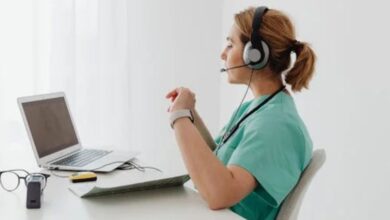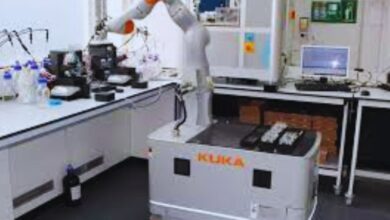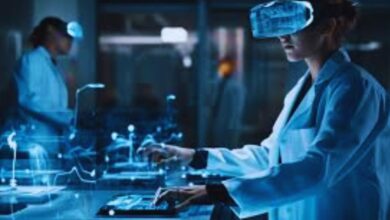Exploring the Future of Virtual Labs: A Game-Changer for Modern Education

What Are Virtual Labs?
Virtual labs are software-based platforms that replicate real-world laboratory experiments in a digital environment. They provide students with the opportunity to perform scientific experiments, explore different variables, and analyze results just as they would in a traditional laboratory setting. These labs are especially beneficial in fields like biology, chemistry, physics, engineering, and medicine, where hands-on practice is essential for a deeper understanding of concepts.
The Growing Demand for Virtual Labs
As education continues to embrace digital transformation, virtual labs are becoming increasingly popular in schools, universities, and online learning platforms. The COVID-19 pandemic played a significant role in accelerating this shift, as schools and universities had to quickly adapt to remote learning. With physical classrooms and labs being inaccessible for a large part of the global student population, virtual labs offered a solution to continue practical learning and experimentation.
Even in the post-pandemic world, virtual labs are likely to remain a critical component of education, as they provide flexibility and accessibility for learners who may not have easy access to physical labs. Additionally, these labs offer opportunities for students to engage with more diverse and complex experiments that might not be possible in traditional settings due to safety concerns, cost, or resource limitations.
Key Benefits of Virtual Labs
- Accessibility and Convenience Virtual labs break down geographical and logistical barriers. Students from different parts of the world can access high-quality laboratory experiences from the comfort of their own homes. All that is needed is a device with internet access, making education more inclusive, particularly for those who may not have access to well-equipped physical labs.
- Cost-Effectiveness Running a physical laboratory requires significant investment in equipment, supplies, and maintenance. Virtual labs, on the other hand, minimize these costs. Educational institutions can provide access to a wide range of experiments without worrying about the costs associated with laboratory infrastructure and consumables.
- Enhanced Learning Experience Virtual labs offer a safe environment where students can explore concepts without the fear of making mistakes that could be costly or dangerous in a real lab. This encourages experimentation and creativity. Learners can easily repeat experiments, try different approaches, and explore various scenarios, which deepens their understanding of the subject matter.
- Interactive and Engaging Many virtual labs incorporate interactive features such as animations, simulations, and 3D models to make the learning process more engaging. These interactive tools help students visualize complex concepts that are often difficult to grasp through traditional teaching methods. Moreover, the gamification of virtual labs can make the learning experience more enjoyable and motivating.
- Data-Driven Insights Virtual labs often come with built-in analytics that allow students and educators to track performance, observe trends, and gain insights into the effectiveness of different experimental setups. This data can help educators adjust their teaching methods and identify areas where students might need additional support.
Challenges and Considerations
While virtual labs offer numerous advantages, there are some challenges that must be addressed. One of the primary concerns is the lack of hands-on experience with real-world materials and equipment. Although virtual simulations can replicate many aspects of physical labs, they cannot fully replace the tactile experience and skills gained from working directly with instruments and materials.
Additionally, students need access to reliable technology and the internet to participate in virtual labs. This can be a barrier in underdeveloped regions or for students from lower socioeconomic backgrounds. Ensuring equal access to digital tools is a critical issue that needs to be addressed to make virtual labs a truly universal educational resource.
The Future of Virtual Labs
As technology continues to advance, the potential for virtual labs is vast. The integration of augmented reality (AR) and virtual reality (VR) could further enhance the learning experience, offering immersive and highly interactive environments that mimic real-life labs. These technologies could allow students to virtually manipulate objects, conduct experiments, and interact with lab assistants, creating a more lifelike and engaging experience.
Artificial intelligence (AI) could also play a key role in the development of personalized virtual labs. AI-powered systems could adapt to individual learning styles, provide real-time feedback, and recommend experiments based on a student’s progress and interests. This would enable more tailored learning experiences that meet the unique needs of each student.
Conclusion
Virtual labs are undoubtedly a game-changer for modern education. They offer a flexible, cost-effective, and engaging way for students to experience practical learning and develop essential skills. As technology advances, the possibilities for virtual labs will only continue to expand, transforming the educational landscape. By embracing these innovations, we can help ensure that the next generation of learners is well-equipped to tackle the challenges of the future.
The future of education is digital, and virtual labs are at the forefront of this revolution.



